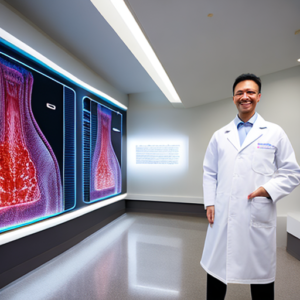Do you constantly battle with tooth decay, persistent gum inflammation, or the uncomfortable dryness in your mouth? Many individuals struggle to achieve truly healthy smiles despite diligently brushing and flossing. The truth is often far more nuanced than simply following a standard oral hygiene routine. A significant factor frequently overlooked is saliva – our body’s natural defense against dental problems. Understanding its vital role can revolutionize your approach to maintaining optimal oral health. This comprehensive guide delves into the fascinating world of saliva, exploring its composition, functions, and how you can maximize its protective capabilities.
Introduction: Saliva – The Silent Guardian of Your Smile
Oral hygiene is frequently portrayed as a simple matter of brushing twice daily. However, a robust oral microbiome and healthy teeth require more than just surface cleaning. Saliva isn’t merely a lubricant; it’s a complex fluid with remarkable properties that actively combat decay and infection. It neutralizes acids produced by bacteria, remineralizes tooth enamel, washes away food debris, and even contains antimicrobial agents. Ignoring the significance of saliva can lead to preventable dental issues – making proactive management essential for everyone.
Recent studies estimate that up to 40% of adults experience some degree of dry mouth, or xerostomia, which dramatically increases their risk of tooth decay and gum disease. This highlights the crucial need to understand how saliva functions and what can be done to support its production. Let’s explore exactly how saliva contributes to a healthy oral environment and actionable steps you can take to optimize your saliva flow and overall dental well-being.
The Complex Composition of Saliva
Saliva isn’t just water; it’s a remarkably complex mixture. Its composition varies slightly depending on factors like hydration levels, diet, and overall health. Here are the key components:
- Water (98%): The primary solvent, crucial for dissolving food particles and facilitating chemical reactions.
- Electrolytes (1.5%): Including sodium, potassium, chloride, and bicarbonate, which maintain pH balance and contribute to saliva’s buffering capacity.
- Proteins (1.5%):** Including amylase (which begins carbohydrate digestion), lysozyme (an antibacterial enzyme), and mucin (a glycoprotein that lubricates the mouth).
- Mucus: A gel-like substance produced by goblet cells, which protects the oral mucosa and facilitates swallowing.
- Immunoglobulins (Antibodies):** These help fight off infections in the mouth.
Key Functions of Saliva in Maintaining Oral Health
1. Buffering Action
Saliva’s most critical function is its ability to neutralize acids. When bacteria metabolize sugars and carbohydrates, they produce lactic acid as a byproduct. This acid attacks tooth enamel, leading to demineralization – the first stage of tooth decay. Saliva contains bicarbonate and phosphate ions that rapidly buffer this acidic environment, preventing further enamel erosion. For example, a study published in the *Journal of Dental Research* demonstrated that saliva significantly reduced the acid production by oral bacteria.
2. Remineralization
Saliva contains calcium and phosphate ions – the building blocks of tooth enamel. When teeth are exposed to acids, these minerals are lost. However, saliva’s buffering action allows for the gradual re-deposition of calcium and phosphate, a process known as remineralization. Fluoride, often added to toothpaste and water, greatly enhances this remineralizing effect, strengthening enamel bonds. This is why fluoride treatments are so effective in preventing cavities.
3. Washing Away Food Debris
Saliva’s constant flow washes away food particles, bacteria, and debris from the teeth surfaces. This mechanical action prevents the buildup of plaque – a sticky film harboring harmful bacteria – which is a primary cause of tooth decay and gum disease. A case study involving patients with poor oral hygiene showed significantly reduced plaque accumulation in those who consistently maintained adequate saliva flow.
4. Antimicrobial Action
Lysozyme, an enzyme present in saliva, possesses potent antimicrobial properties. It breaks down the cell walls of bacteria, effectively reducing their numbers and preventing infections. Saliva also contains other antibacterial compounds like secretory immunoglobulin A (sIgA), which targets pathogens directly. This is particularly important in combating *Streptococcus mutans*, a key bacterium involved in tooth decay.
Dry Mouth: Xerostomia and Its Impact
Xerostomia, or dry mouth, is the medical term for reduced saliva flow. It’s a common condition with numerous causes, including medications (antihistamines, antidepressants, diuretics are frequent culprits), aging, certain diseases (Sjogren’s syndrome, diabetes), and radiation therapy to the head and neck. Studies show that individuals with dry mouth have a dramatically increased risk of dental caries and periodontal disease – approximately three times higher than those with normal saliva flow.
The consequences of chronic dry mouth extend beyond oral health. It can cause discomfort, difficulty speaking and swallowing, altered taste perception, and even contribute to the growth of harmful bacteria in the mouth. Managing dry mouth effectively is therefore a cornerstone of preventative dentistry.
Strategies for Optimizing Saliva Flow
1. Hydration
Simply drinking plenty of water throughout the day is one of the most effective ways to combat dry mouth. Aim for 8 glasses of water a day – more if you live in a hot climate or are physically active.
2. Dietary Modifications
Limit sugary and acidic foods and drinks, as these exacerbate acid production. Focus on a balanced diet rich in calcium and phosphorus to support remineralization. Chewing sugar-free gum stimulates saliva flow.
3. Oral Hygiene Practices
Maintain meticulous oral hygiene: brush twice daily with fluoride toothpaste and floss regularly. Fluoride helps strengthen enamel, offering protection against acid attacks even when saliva flow is reduced.
4. Medications Review
Discuss any medications you’re taking with your dentist or doctor to determine if they are contributing to dry mouth. Sometimes, alternative medications can be prescribed that don’t cause this side effect.
5. Saliva Substitutes
Saliva substitutes – available over-the-counter – provide temporary relief by lubricating the mouth and neutralizing acids. They’re particularly helpful during sleep to prevent overnight enamel erosion.
Salivary Gland Dysfunction: A Deeper Dive
Beyond simply reduced flow, some individuals experience salivary gland dysfunction, where the glands aren’t producing adequate amounts of saliva or their saliva isn’t functioning optimally. This can be due to conditions like Sjogren’s syndrome, autoimmune diseases affecting salivary glands. Diagnosing and treating salivary gland dysfunction requires a comprehensive approach that may include medications to stimulate saliva production (pilocarpine) or addressing the underlying cause of the dysfunction.
Conclusion: Saliva – An Unsung Hero in Oral Health
Saliva is far more than just a passive fluid; it’s an active participant in maintaining oral health. Its buffering, remineralizing, and antimicrobial properties are essential for preventing tooth decay and gum disease. Understanding the complex composition of saliva and how to optimize its flow is a critical component of any effective oral hygiene strategy. By prioritizing hydration, making appropriate dietary choices, and addressing potential salivary issues, you can significantly enhance your chances of achieving and maintaining a healthy, confident smile.
Key Takeaways
- Saliva is vital for neutralizing acids produced by bacteria.
- Remineralization – rebuilding enamel – relies heavily on saliva’s components.
- Dry mouth significantly increases the risk of dental problems.
- Optimizing saliva flow through hydration and good oral hygiene practices is paramount.
Frequently Asked Questions (FAQs)
- Q: Can I brush my teeth with just water? A: No, it’s crucial to use toothpaste containing fluoride, as the fluoride strengthens enamel and provides additional protection.
- Q: How often should I see a dentist if I have dry mouth? A: More frequent check-ups are recommended to monitor for early signs of decay or gum disease.
- Q: What foods should I avoid if I have dry mouth? A: Sugary and acidic foods and drinks should be limited to minimize acid production.
- Q: Can chewing sugar-free gum help with saliva flow? A: Yes, chewing stimulates saliva production.
















